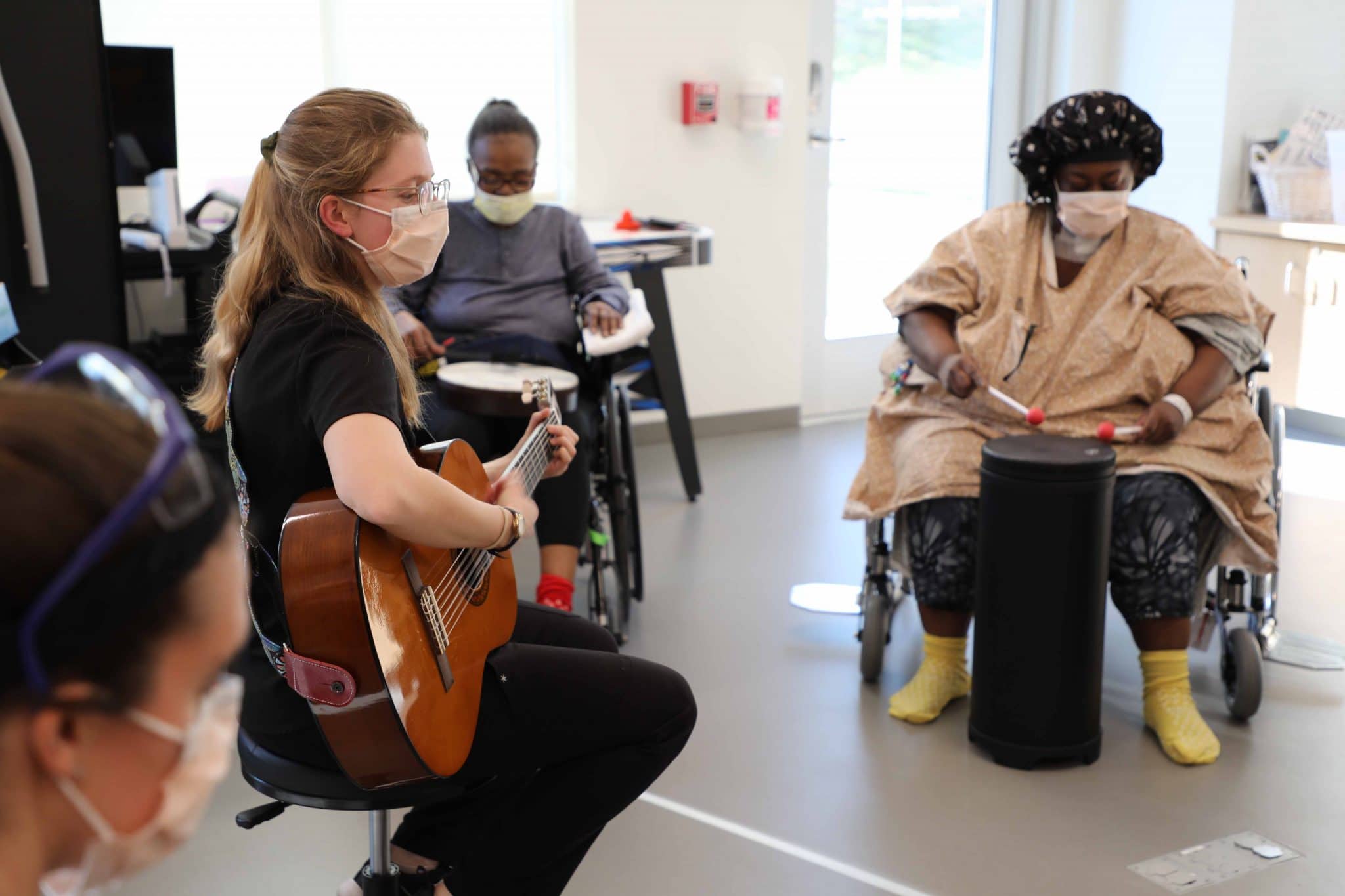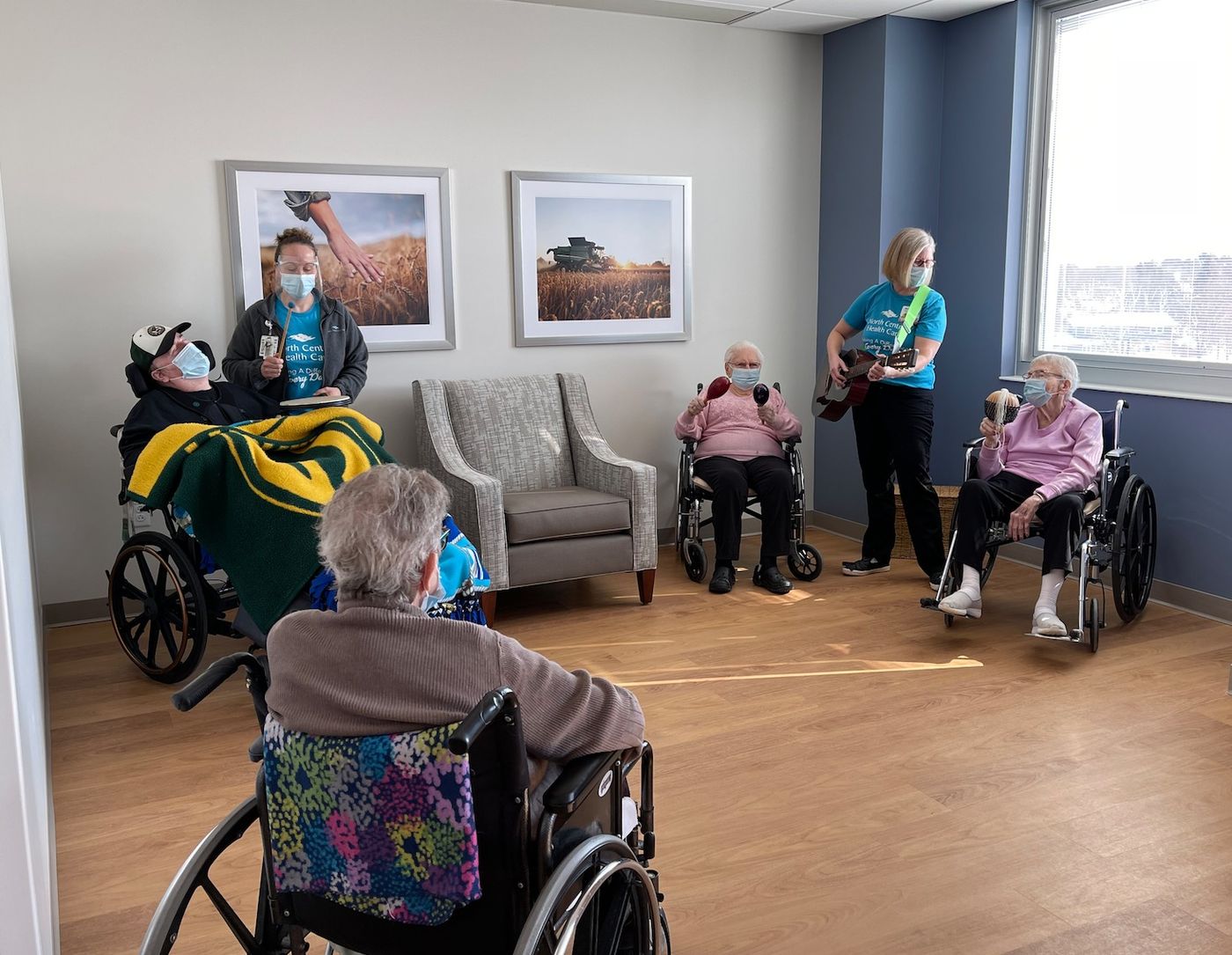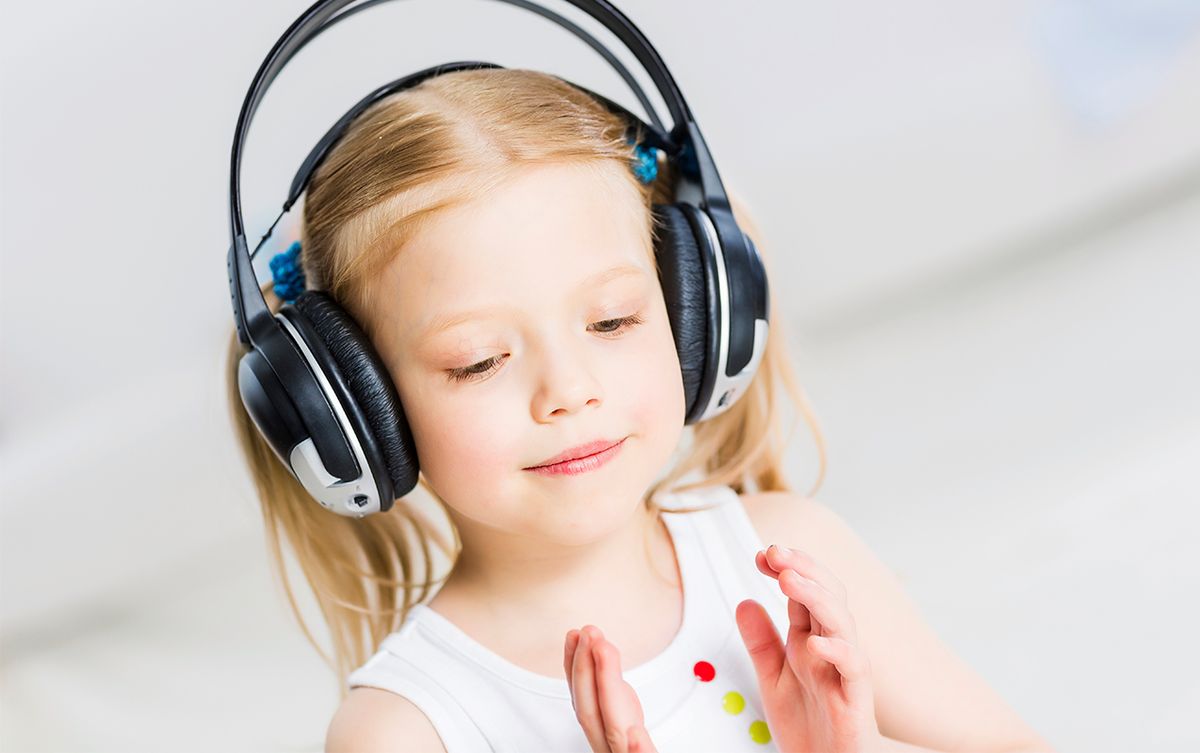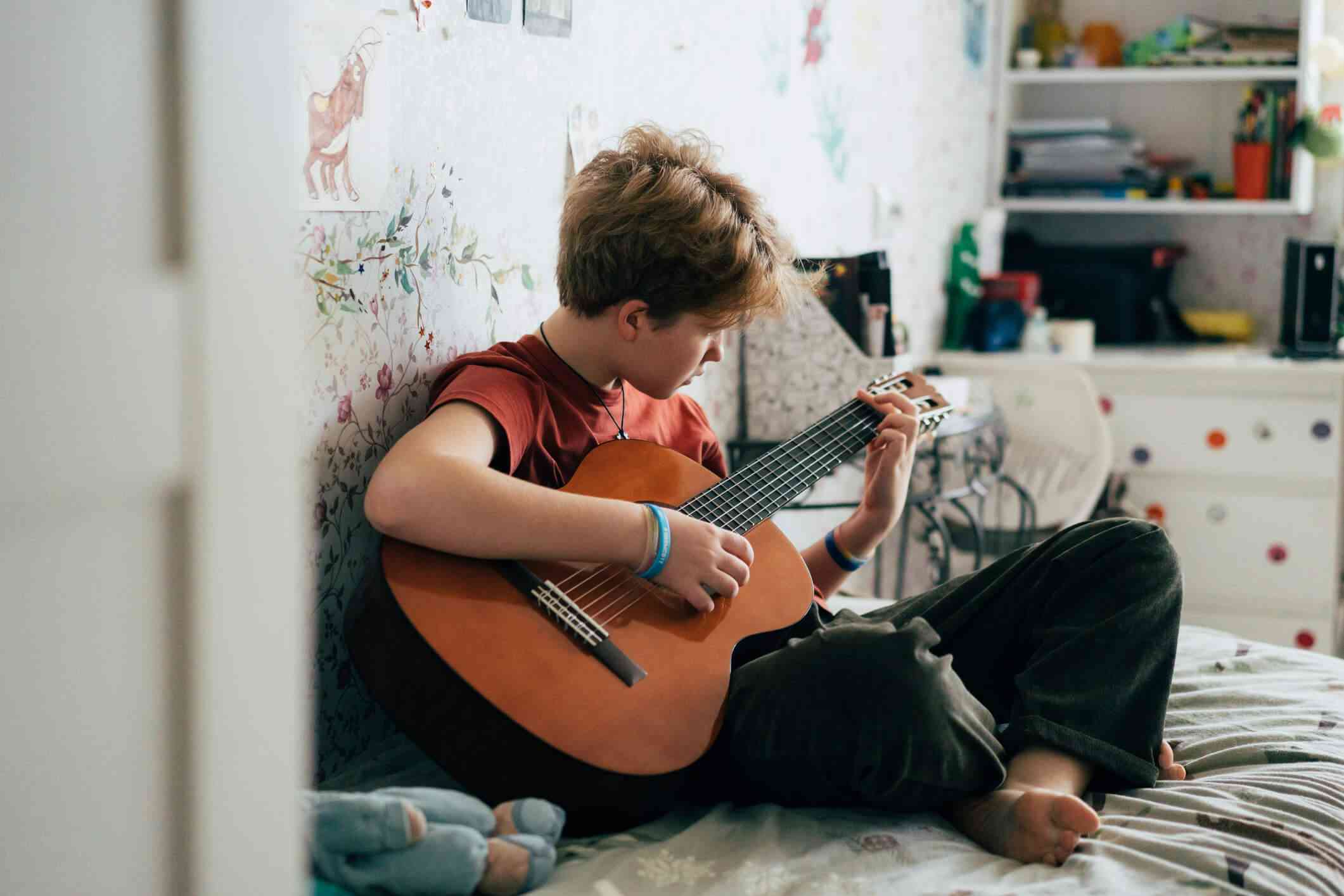Home>Events & Info>Music Therapy>How Prisons Use Music Therapy
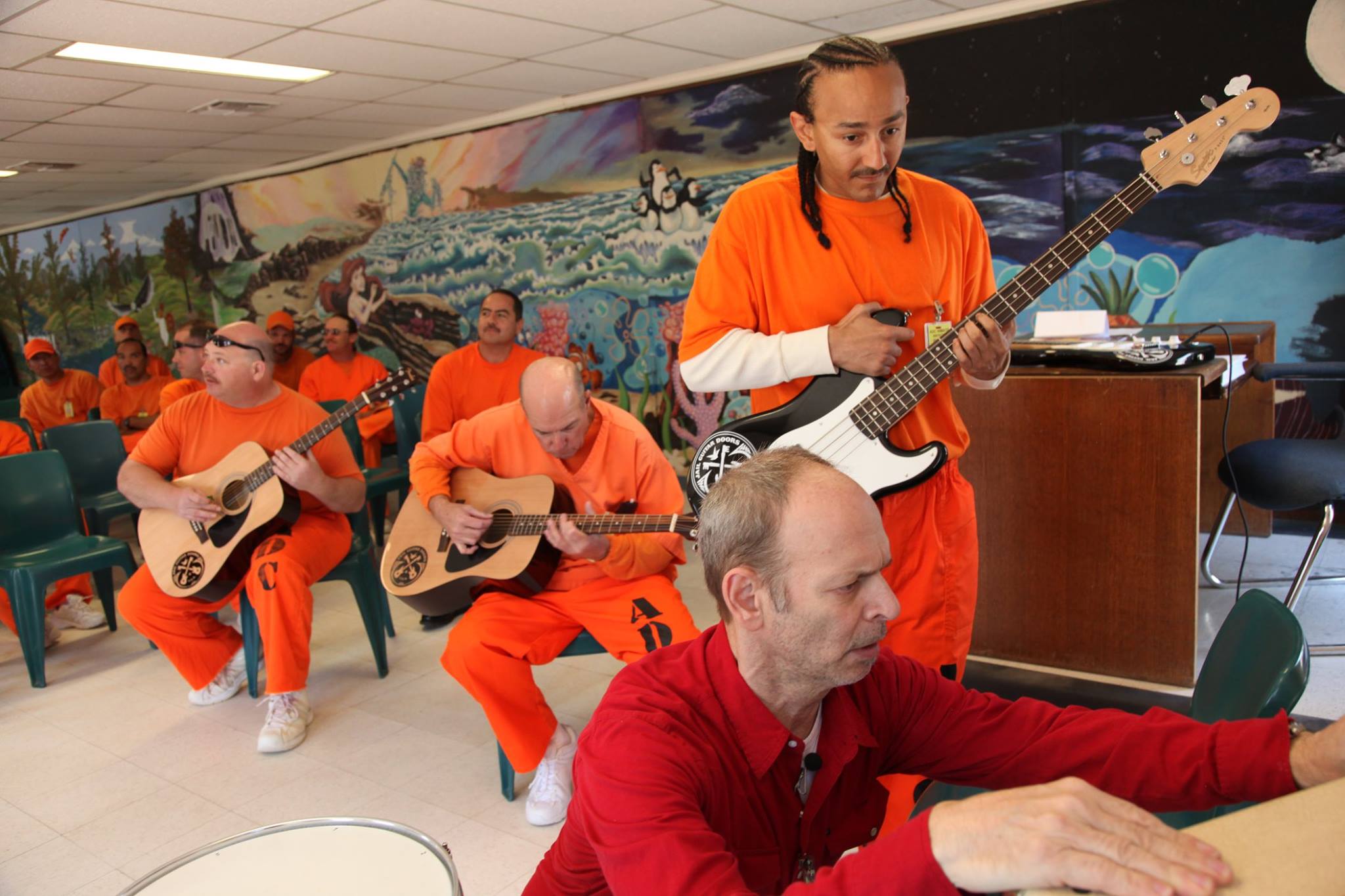

Music Therapy
How Prisons Use Music Therapy
Published: February 2, 2024
Discover how prisons incorporate music therapy as a powerful tool for rehabilitation and healing. Explore the benefits and impact of music therapy programs in correctional facilities.
(Many of the links in this article redirect to a specific reviewed product. Your purchase of these products through affiliate links helps to generate commission for AudioLover.com, at no extra cost. Learn more)
Table of Contents
- Introduction
- History of Music Therapy in Prisons
- Benefits of Music Therapy for Inmates
- Music Therapy Techniques Used in Prisons
- Case Studies of Successful Music Therapy Programs in Prisons
- Challenges and Limitations of Music Therapy in Prisons
- Impact of Music Therapy on Inmate Rehabilitation and Recidivism Rates
- Future Prospects and Advancements in Music Therapy for Prisons
- Conclusion
Introduction
Welcome to the fascinating world of music therapy in prisons. In recent years, there has been a growing recognition of the powerful role that music can play in the rehabilitation and transformation of inmates. Music therapy, a specialized field that combines music and therapeutic techniques, has emerged as a powerful tool in the correctional system.
The use of music therapy in prisons is not a new concept. In fact, it can be traced back to ancient civilizations, where music was used as a means of healing and restoring balance. However, the systematic implementation of music therapy in correctional facilities is a relatively recent development.
This article will explore the history of music therapy in prisons, discuss the benefits it offers to inmates, delve into the various techniques used, highlight successful case studies, and address the challenges and limitations faced by music therapy programs in correctional settings. Additionally, we will examine the impact of music therapy on inmate rehabilitation and recidivism rates, as well as explore future prospects and advancements in this field.
Music therapy in prisons goes beyond merely providing entertainment or a distraction for inmates. It is a therapeutic intervention that utilizes music as a means of expression, communication, and personal growth. Through carefully designed sessions, certified music therapists create a safe and supportive environment where inmates can engage in self-discovery, emotional release, and skill-building.
It is important to note that music therapy is not limited to a specific genre or style of music. The power of music lies in its universal appeal, and therapists tailor their interventions to match the individual needs and preferences of each inmate. Whether it’s classical, jazz, hip-hop, or folk, the chosen music becomes a vehicle for healing and transformation.
By combining elements of music, psychology, and counseling, music therapy addresses a wide range of physical, emotional, cognitive, and social needs. It stimulates creativity, enhances self-esteem, improves communication skills, reduces stress, and fosters emotional well-being. These therapeutic benefits can have a profound impact on inmate behavior, self-awareness, and overall rehabilitation.
Music therapy programs in prisons have shown promising results in reducing aggression, enhancing emotional regulation, developing coping mechanisms, and promoting positive social interactions among inmates. They provide a unique avenue for self-expression, self-reflection, and personal growth, helping inmates explore their emotions and thoughts in a safe and supportive environment.
As we delve deeper into the world of music therapy in prisons, we will discover the transformative power of music and the profound impact it can have on individuals who have found themselves entangled in the web of the correctional system.
History of Music Therapy in Prisons
The use of music as a therapeutic tool in correctional settings dates back to the early 20th century. However, it was not until the 1970s that the field of music therapy in prisons gained recognition and began to flourish.
During this time, the prison system started to recognize the potential of music therapy in addressing the unique needs of inmates. The focus shifted from punishment to rehabilitation, and music therapy became an integral part of the correctional rehabilitation programs.
One of the pioneers in the field was Dr. Clive Robbins, an American music therapist who worked extensively with individuals in institutional settings, including prisons. His groundbreaking work laid the foundation for the development of music therapy programs in correctional facilities.
Over the years, music therapy in prisons has evolved and expanded, gaining support from policymakers, correctional officials, and the wider community. Research has shown that music therapy can contribute to reducing recidivism rates and improving inmate behavior, mental health, and overall well-being.
Today, music therapy programs can be found in prisons around the world, providing inmates with a unique and innovative way to address the challenges they face during their incarceration. These programs are often run by certified music therapists who have undergone specialized training in both music and therapy.
The goals of music therapy in prisons can vary depending on the needs of the individual inmates and the specific objectives of the correctional facility. Some programs focus on developing essential life skills, such as communication, anger management, and problem-solving, while others aim to promote emotional healing, self-expression, and self-confidence.
Music therapy in prisons utilizes a range of techniques and interventions, including songwriting, improvisation, listening to music, group drumming, and playing different musical instruments. These activities provide inmates with a creative outlet, enabling them to explore their emotions, express themselves, and develop new coping strategies.
The benefits of music therapy in prisons extend beyond the walls of the correctional facility. Inmates who engage in music therapy programs have reported improvements in their relationships with family members, increased empathy, and a greater sense of optimism for the future.
Overall, the history of music therapy in prisons highlights the transformative power of music, providing inmates with a valuable tool for personal growth, rehabilitation, and ultimately, a successful reintegration into society.
Benefits of Music Therapy for Inmates
Music therapy in prisons offers a wide range of benefits for inmates, addressing their diverse needs and promoting positive changes in their lives. These benefits extend beyond the therapeutic sessions, influencing inmate behavior, mental health, and overall well-being. Here are some of the key benefits of music therapy for inmates:
- Emotional Expression and Regulation: Music provides a safe and non-threatening medium for inmates to express and regulate their emotions. Through music therapy, they can explore and release pent-up emotions, reducing stress and enhancing emotional well-being.
- Self-Reflection and Insight: Engaging with music allows inmates to reflect on their past actions, examine their beliefs and values, and gain insight into the factors contributing to their criminal behavior. This self-reflection is crucial for personal growth and rehabilitation.
- Improved Communication Skills: Music therapy sessions encourage inmates to interact and communicate effectively with others, fostering positive social skills, empathy, and cooperation. This improvement in communication extends to their relationships with fellow inmates and correctional staff.
- Stress Relief and Relaxation: Music has a powerful effect on reducing stress and promoting relaxation. Inmates often experience high levels of stress during their incarceration, and music therapy offers a therapeutic escape, calming their minds and bodies.
- Enhanced Cognitive Skills: Engaging in musical activities stimulates cognitive functions such as memory, attention, and problem-solving. The structured nature of music therapy sessions helps inmates develop these skills, contributing to their overall cognitive development.
- Creative Outlet: Music therapy provides inmates with a creative medium to express themselves, fostering a sense of identity and purpose. Through songwriting, playing instruments, or improvising, they can channel their energy and creativity into constructive outlets.
- Positive Behavior Change: Music therapy programs in prisons have been shown to reduce aggressive behavior, improve self-control, and promote pro-social behaviors among inmates. It offers them alternative coping mechanisms and tools to deal with conflict and frustration.
- Increased Self-Esteem and Confidence: Successes and accomplishments in music therapy sessions, such as learning to play an instrument or composing a song, can significantly boost inmates’ self-esteem and confidence. This newfound self-belief carries over to other aspects of their lives.
- Building a Supportive Community: Music therapy sessions create a sense of community and belonging among inmates. Collaboration and teamwork in musical activities foster a supportive environment where they can learn from and encourage each other.
- Reintegration and Beyond: The skills and personal growth attained through music therapy in prisons can greatly assist inmates in their reintegration into society. It improves their chances of finding employment, maintaining healthy relationships, and leading fulfilling lives post-release.
These benefits demonstrate the power of music therapy as a transformative tool in the correctional setting. By addressing the emotional, cognitive, and social needs of inmates, music therapy provides them with a positive pathway towards rehabilitation and successful reintegration into the community.
Music Therapy Techniques Used in Prisons
Music therapy in prisons employs a variety of techniques and interventions to support the rehabilitation and personal growth of inmates. These techniques are carefully chosen and tailored to meet the specific needs and goals of the individuals and the correctional facility. Here are some common music therapy techniques used in prisons:
- Active Music-Making: Inmates actively participate in creating music through activities such as singing, playing musical instruments, and engaging in group improvisation. This hands-on approach allows them to express themselves, build confidence, and develop their musical abilities.
- Songwriting: Writing and composing songs provide inmates with an outlet to express their thoughts, emotions, and experiences. Through the process of songwriting, they can gain insight, articulate their feelings, and share their stories in a meaningful way.
- Lyric Analysis: Inmates analyze the lyrics of various songs, exploring their personal meanings, themes, and emotions. This process allows them to connect with the music on a deeper level, identifying with the experiences portrayed in the songs and relating them to their own lives.
- Guided Imagery: In guided imagery sessions, inmates listen to calming or evocative music and are encouraged to imagine specific scenes, situations, or memories. This technique helps them explore their inner thoughts, memories, and emotions, facilitating self-reflection and personal insight.
- Rhythm-Based Activities: Drumming and percussion activities are commonly used in music therapy in prisons. Group drumming sessions promote cooperation, synchronization, and healthy social interactions. Playing percussion instruments enables inmates to channel their energy, release tension, and develop rhythmic skills.
- Relaxation Techniques: Music therapy in prisons incorporates relaxation techniques, such as guided listening to calming music, deep breathing exercises, and progressive muscle relaxation. These techniques aid in reducing stress, promoting relaxation, and restoring a sense of calm amidst the correctional environment.
- Group Music-Making: Group music-making activities foster a sense of community and teamwork among inmates. They collaborate in creating music, harmonizing voices, and synchronizing their playing. This promotes effective communication, cooperation, and mutual support.
- Music-Assisted Guided Meditation: In this technique, inmates listen to soft, soothing music while engaging in guided meditation practices. The combination of music and meditation helps inmates achieve a state of deep relaxation, reduce anxiety, and improve mindfulness.
- Music Listening: Simply listening to music can be a therapeutic experience in itself. Inmates are given the opportunity to listen to various genres of music, selecting songs that resonate with their emotions and experiences. This allows for emotional connection, reflection, and relaxation.
- Music Performance: In some instances, music therapy in prisons includes opportunities for inmates to perform for their peers or in front of an audience. This offers them a platform to showcase their talent, build self-confidence, overcome stage fright, and experience the sense of achievement that comes with a successful performance.
These music therapy techniques create a supportive and engaging environment where inmates can explore their emotions, develop interpersonal skills, enhance self-awareness, and acquire valuable tools for personal growth and change. Each technique serves as a unique pathway for inmates to connect with music, themselves, and others, laying the groundwork for a successful journey towards rehabilitation and transformation.
Case Studies of Successful Music Therapy Programs in Prisons
Over the years, numerous music therapy programs in prisons have demonstrated the positive impact of music in the correctional environment. Here are a few case studies highlighting successful music therapy initiatives:
- Harmony Project: The Harmony Project, implemented in several correctional facilities, focuses on providing music education and mentorship to incarcerated individuals. This program has shown remarkable success in reducing disciplinary incidents and improving inmate behavior. In addition, participants have reported increased self-confidence, improved communication skills, and a sense of belonging within the music community.
- Rhythmic Beat Program: The Rhythmic Beat Program, implemented in a federal prison, utilizes drumming and percussion activities as a means of promoting self-expression and pro-social behavior among inmates. The program has demonstrated significant reductions in aggression and disciplinary infractions, as well as improvements in anger management skills and emotional regulation. Inmates have reported heightened self-esteem and a greater sense of belonging through their involvement in the program.
- Opera Rehabilitation Ensemble (ORE): The Opera Rehabilitation Ensemble, established in a state prison, provides inmates with the opportunity to learn and perform operatic music. The program has been highly successful in fostering empathy, teamwork, and self-discipline among participants. Inmates have reported increased self-confidence, improved social skills, and a sense of accomplishment through their involvement in ORE, proving the transformative power of music in the rehabilitation process.
- Songwriting for Recovery: Songwriting for Recovery is a program implemented in partnership with a community-based rehabilitation center for incarcerated women. Through the process of collaborative songwriting, participants explore and express their emotions, experiences, and aspirations. The program has shown notable results in improving self-awareness, building emotional resilience, and developing valuable life skills necessary for successful reintegration into society.
- The Beat Within: The Beat Within is a unique music therapy program that combines creative writing and spoken word performances in juvenile detention centers. Through writing, sharing, and performing their poetry, participants develop emotional intelligence, critical thinking skills, and self-confidence. The program has demonstrated reduced recidivism rates, improved literacy skills, and increased self-expression among the youth involved.
These case studies serve as powerful testimonies to the effectiveness of music therapy programs in prisons. They illustrate how music can serve as a catalyst for personal growth, emotional healing, interpersonal connection, and behavior change among incarcerated individuals. The success of these programs showcases the potential of music therapy as a valuable tool in the correctional setting.
Challenges and Limitations of Music Therapy in Prisons
While music therapy has shown great promise in prison settings, there are several challenges and limitations that need to be considered. These constraints can impact the implementation and effectiveness of music therapy programs. Here are some of the key challenges and limitations:
- Resources and Funding: One of the primary challenges is the availability of resources and funding for music therapy programs in prisons. Limited budgets and competing priorities within correctional facilities can make it difficult to sustain and expand these programs, hindering their reach and impact.
- Logistical Constraints: Prisons have strict regulations and protocols that must be adhered to, which can present logistical challenges for music therapy sessions. These may include limited access to instruments, restricted movement, and security concerns that can impede the smooth operation of therapy activities.
- Staff Training and Awareness: Adequate training of correctional staff is crucial for the successful implementation of music therapy programs. However, the availability of trained music therapists and the awareness of the benefits of music therapy among prison staff can vary, affecting the quality and consistency of the programs.
- Participant Resistance: Some inmates may initially be resistant to participating in music therapy or expressing themselves through music. They may have preconceived notions or skepticism about the effectiveness of this approach, which can hinder their engagement and progress in the therapy process.
- Diversity of Needs: Prisons house individuals with diverse backgrounds, experiences, and treatment needs. Music therapy may not address all the specific needs of each individual, as some inmates may require additional mental health, substance abuse, or vocational support that goes beyond the scope of music therapy.
- Time Constraints and Turnover: In the prison system, inmate populations are often transient, with individuals entering and exiting the facility. This turnover can disrupt the continuity and progress of music therapy programs, making it challenging to build rapport, establish trust, and maintain long-term therapeutic relationships.
- Post-Release Support: A significant limitation of music therapy programs in prisons is the lack of post-release support for participants. The positive changes and skills acquired through music therapy need ongoing reinforcement and support in the community to ensure successful reintegration and reduce the likelihood of recidivism.
It is important to recognize these challenges and limitations to address them effectively and enhance the delivery and impact of music therapy in prisons. Collaboration between correctional systems, music therapy organizations, and community support networks can help overcome these barriers and promote the effective implementation of music therapy programs in correctional settings.
Impact of Music Therapy on Inmate Rehabilitation and Recidivism Rates
The impact of music therapy on inmate rehabilitation and recidivism rates has been the subject of numerous studies and research. The findings consistently suggest that music therapy programs in prisons have a positive influence on the rehabilitation process and can contribute to reducing recidivism rates. Here are some notable ways in which music therapy impacts inmate rehabilitation:
Promoting Emotional Well-being: Music therapy provides inmates with a safe and supportive outlet for expressing and processing their emotions. Through engaging in musical activities and therapeutic interventions, they can develop emotional insight, regulation, and coping mechanisms. This emotional well-being is essential for personal growth and rehabilitation.
Building Pro-Social Skills: Music therapy sessions encourage collaboration, communication, and teamwork among inmates. The group dynamics and collective musical experiences foster positive social interactions, empathy, and cooperation. These pro-social skills are crucial for successful reintegration into society and reducing the likelihood of reoffending.
Improving Self-Confidence and Empowerment: Engaging in music therapy activities, such as performing or composing, can significantly enhance inmates’ self-esteem and self-confidence. The successes and accomplishments in music therapy sessions can empower them to believe in their own capabilities and potential for positive change.
Developing Coping Mechanisms: Inmates often grapple with stress, anxiety, and frustration during their incarceration. Music therapy equips them with alternative and healthier coping mechanisms for dealing with difficult emotions and challenging situations. These coping strategies can help prevent relapse into criminal behavior post-release.
Fostering Personal Growth and Self-Reflection: Music therapy provides inmates with opportunities for self-reflection, introspection, and personal growth. Engaging with music allows them to explore their identity, values, and aspirations, fostering a sense of purpose and direction. This deeper self-understanding is integral to the rehabilitation process.
Promoting Creative and Cognitive Development: Music therapy utilizes engaging and stimulating activities that promote cognitive development, memory recall, and problem-solving skills. Playing an instrument, learning to read music, or composing songs can improve cognitive abilities and enhance intellectual functioning.
Reducing Aggression and Misconduct: Studies have shown that music therapy programs in prisons contribute to a reduction in aggressive behavior and disciplinary infractions among inmates. By providing a positive and structured outlet for emotional expression, music therapy helps inmates to channel their energy constructively and develop healthier patterns of behavior.
Overall, the impact of music therapy on inmate rehabilitation goes beyond the immediate therapeutic sessions. It extends to their overall well-being, behavior, and outlook on life. An enhanced sense of self, improved social skills, and the development of healthy coping mechanisms acquired through music therapy have the potential to reduce recidivism rates and support successful reintegration into the community.
Future Prospects and Advancements in Music Therapy for Prisons
The field of music therapy in prisons continues to evolve and advance, offering exciting prospects for the future. As research and practice expand, there are several areas where advancements and innovations are expected to shape the future of music therapy in correctional settings:
Integration of Technology: Technology has the potential to enhance and expand the reach of music therapy programs in prisons. Virtual music therapy sessions, digital recording equipment, and interactive music apps can provide opportunities for remote therapy, self-guided practice, and creative expression. Integrating technology into music therapy can also facilitate data collection and analysis for program evaluation and research.
Collaborative Partnerships: To strengthen the impact of music therapy in prisons, collaborative partnerships between correctional systems, community organizations, and music therapy associations are crucial. These collaborations can provide resources, expertise, and support for the development and implementation of effective music therapy programs. They can also promote advocacy efforts to raise awareness and funding for music therapy in correctional settings.
Long-term Post-Release Support: Recognizing the need for continuity of care, efforts are being made to provide ongoing support and follow-up for inmates who have participated in music therapy programs. Post-release music therapy programs, community-based music ensembles, and mentorship initiatives can help individuals maintain their musical interests and provide continued therapeutic support as they reintegrate into society.
Evidence-Based Practice: The continued research and evaluation of music therapy programs in prisons are essential for evidence-based practice. By collecting data, measuring outcomes, and studying best practices, the field can further strengthen its impact and demonstrate the effectiveness of music therapy in achieving specific rehabilitation goals. This will help drive policy changes and increase recognition of music therapy as a valuable tool in correctional settings.
Tailored Approaches for Diverse Populations: In recognizing the unique needs and backgrounds of inmates, there is a growing understanding that music therapy interventions need to be tailored to specific populations. Specialized music therapy programs for women, juvenile offenders, and individuals with substance abuse or mental health issues are being developed to address their distinct needs and challenges.
Holistic Integration into Correctional Systems: There is an increasing recognition of the importance of holistic approaches in the correctional system. Music therapy is being integrated into comprehensive rehabilitation programs that address mental health, education, vocational training, and other essential components of prisoner well-being. This integration allows for a more comprehensive and impactful approach to inmate rehabilitation.
As music therapy in prisons continues to progress, it holds great potential for addressing the complex needs of incarcerated individuals. By embracing technological advancements, forging partnerships, prioritizing evidence-based practice, and tailoring interventions, music therapy can play a vital role in promoting rehabilitation, reducing recidivism, and fostering positive transformations in the lives of those within the correctional system.
Conclusion
Music therapy has emerged as a powerful and transformative tool in the realm of inmate rehabilitation within the correctional system. By harnessing the therapeutic potential of music, certified music therapists create safe, supportive, and engaging environments where inmates can explore their emotions, develop essential life skills, and foster personal growth.
Throughout history, music therapy in prisons has shown remarkable benefits for incarcerated individuals. Through emotional expression and regulation, improved communication skills, stress relief, and enhanced cognitive abilities, music therapy programs have successfully contributed to inmate rehabilitation.
While there are challenges and limitations to implementing music therapy in correctional settings, such as resource constraints, logistical issues, and staff training, ongoing advancements and collaborative efforts continue to drive the field forward. The integration of technology, collaborative partnerships, comprehensive post-release support, evidence-based practice, tailored approaches for diverse populations, and holistic integration into correctional systems are shaping the future of music therapy in prisons.
As research and practice continue to expand, it is expected that music therapy will play an even more significant role in inmate rehabilitation and reducing recidivism rates. The transformative power of music, coupled with the expertise of certified music therapists, has the potential to positively impact the lives of incarcerated individuals, providing them with the tools, skills, and support necessary for successful reintegration into society.
As we recognize the immense value of music therapy in prisons, it is crucial to advocate for increased awareness, funding, and support. By investing in music therapy programs, we invest in the well-being, growth, and potential for positive change within the correctional system.
In conclusion, music therapy in prisons is a dynamic and evolving field that offers immense benefits for inmate rehabilitation. It fosters emotional expression, enhances communication skills, reduces stress, promotes self-confidence, and contributes to the overall well-being of incarcerated individuals. With ongoing advancements and collaborative efforts, music therapy will continue to pave the way for transformative change within the correctional system, offering hope, healing, and new beginnings for those seeking to rebuild their lives.


